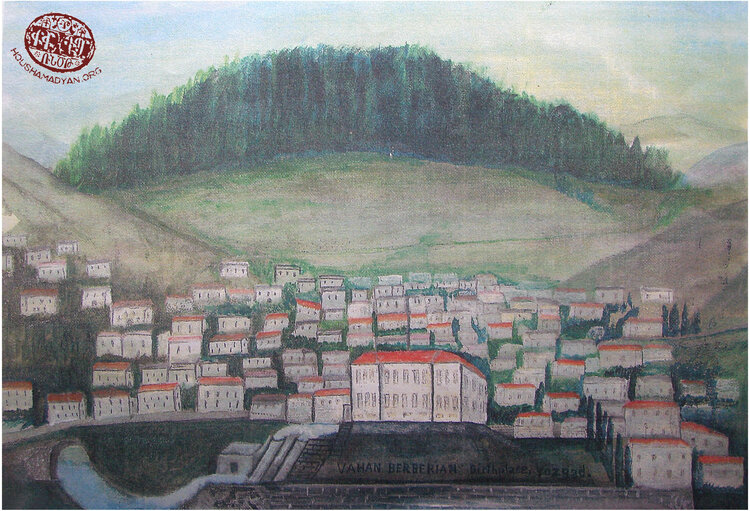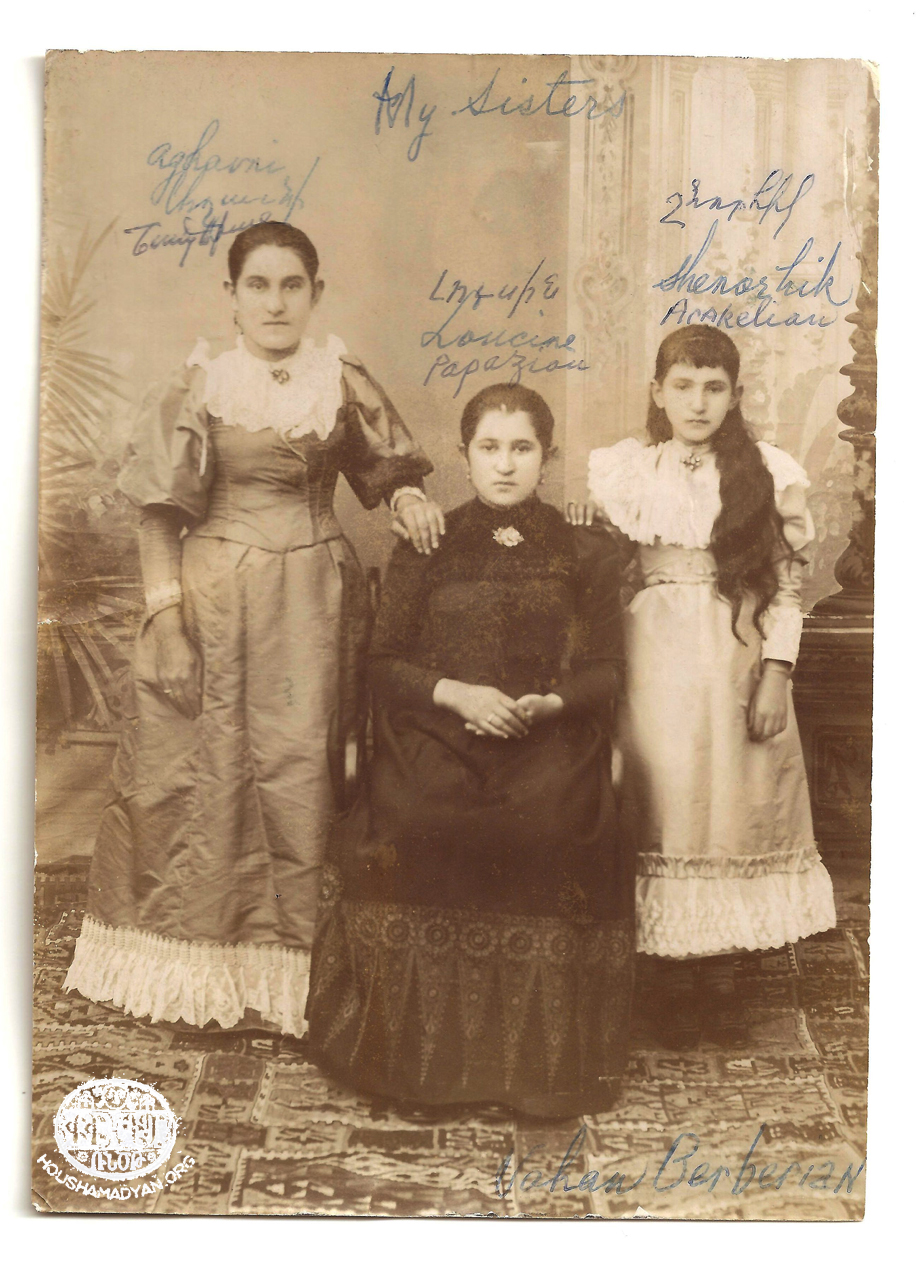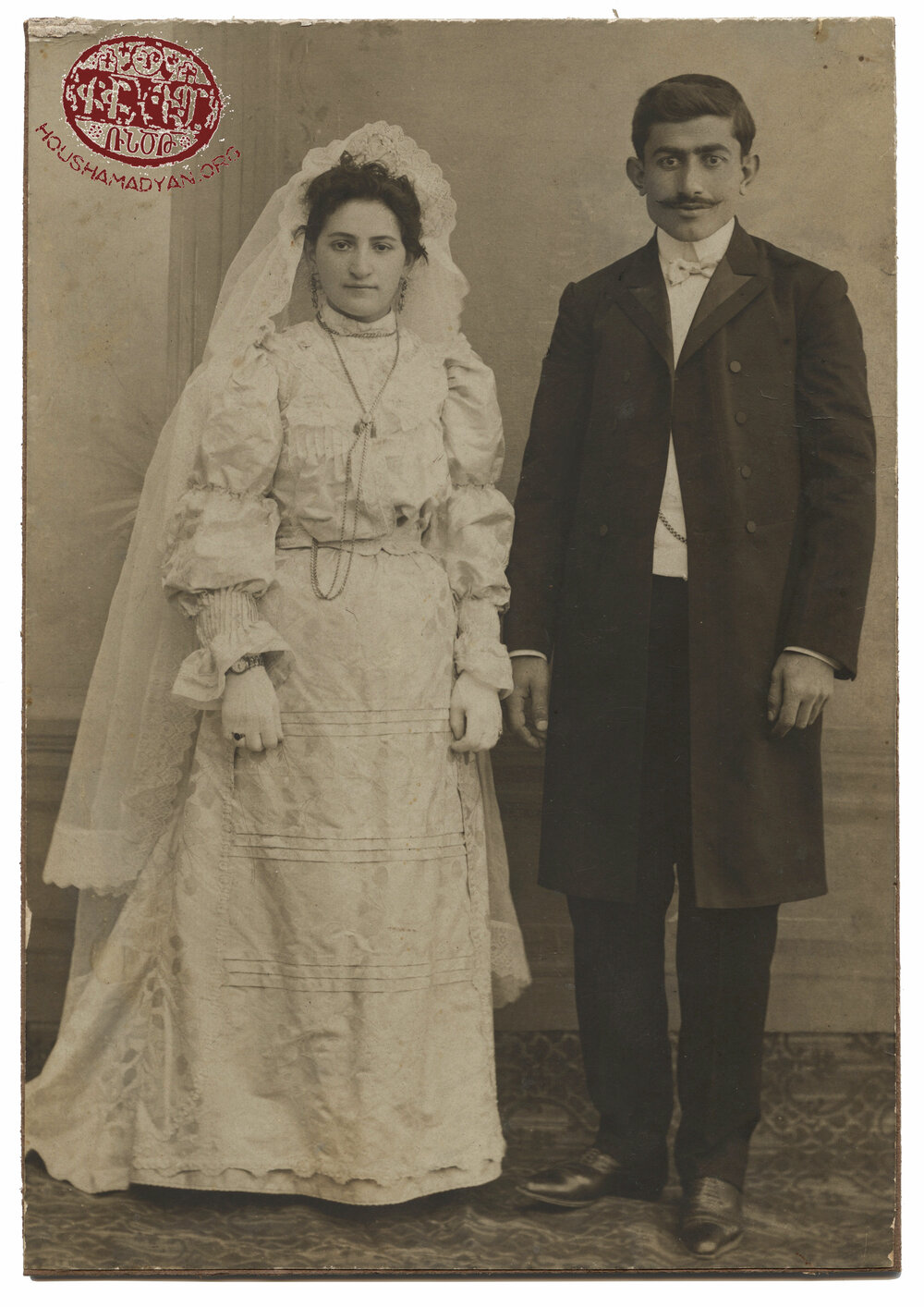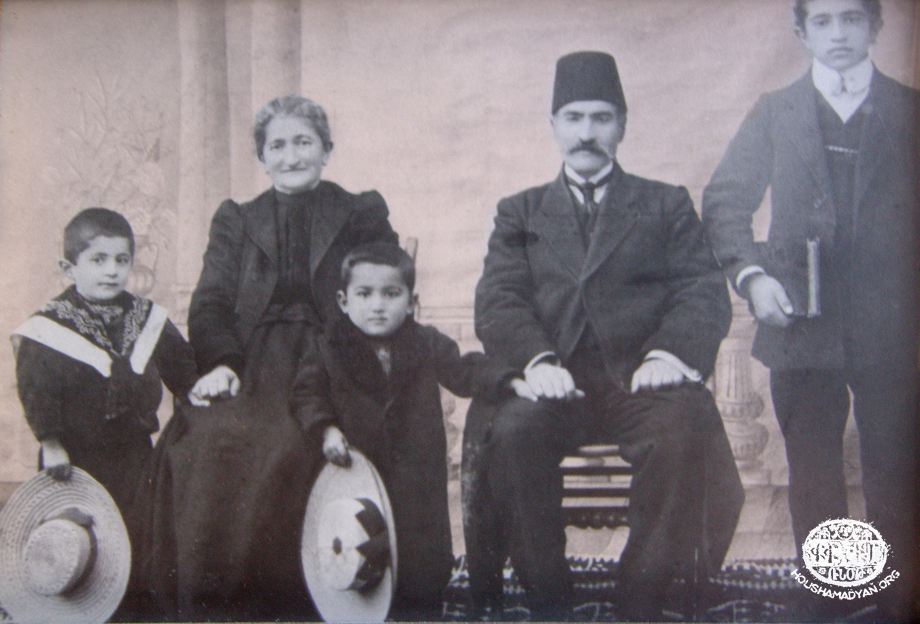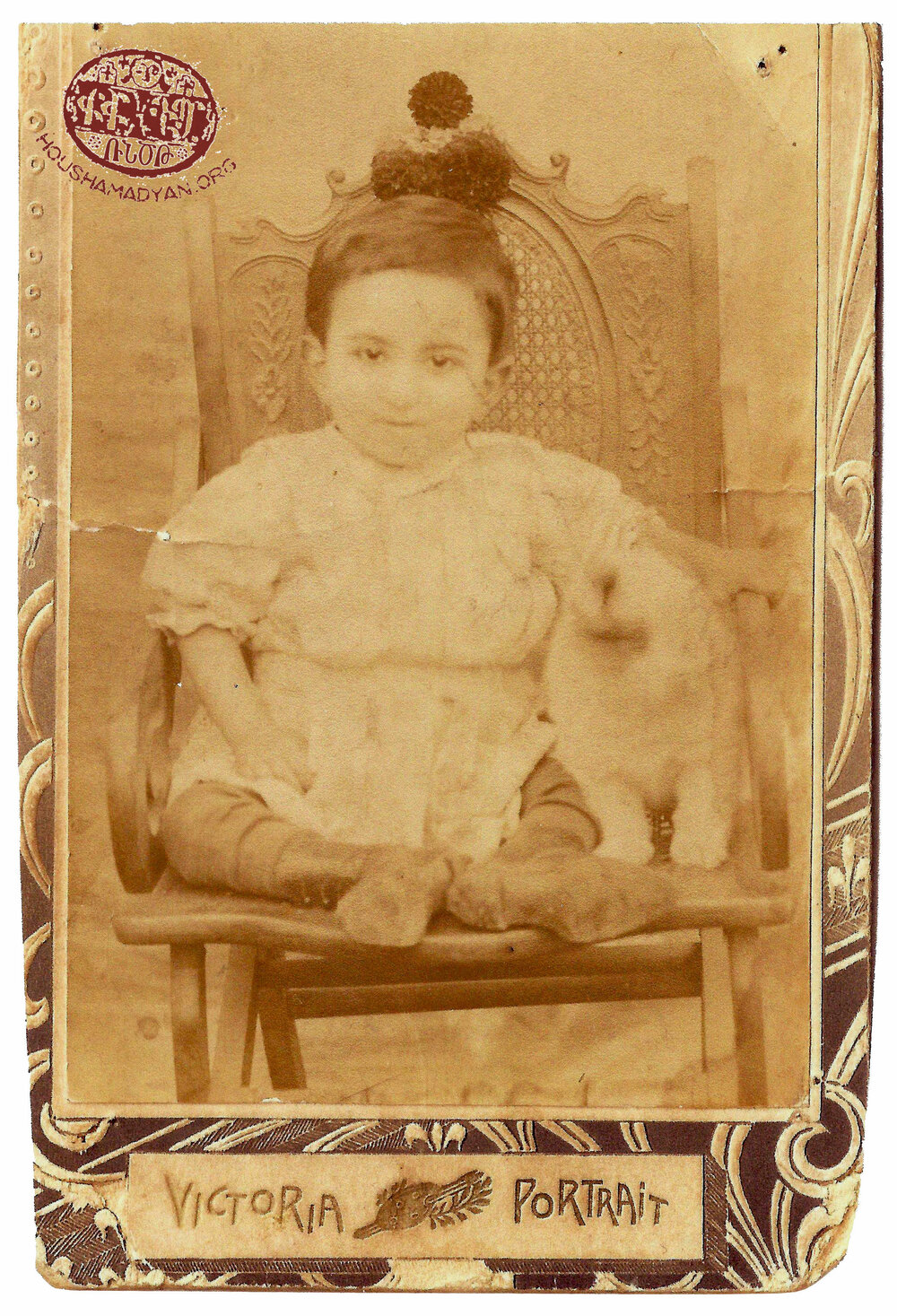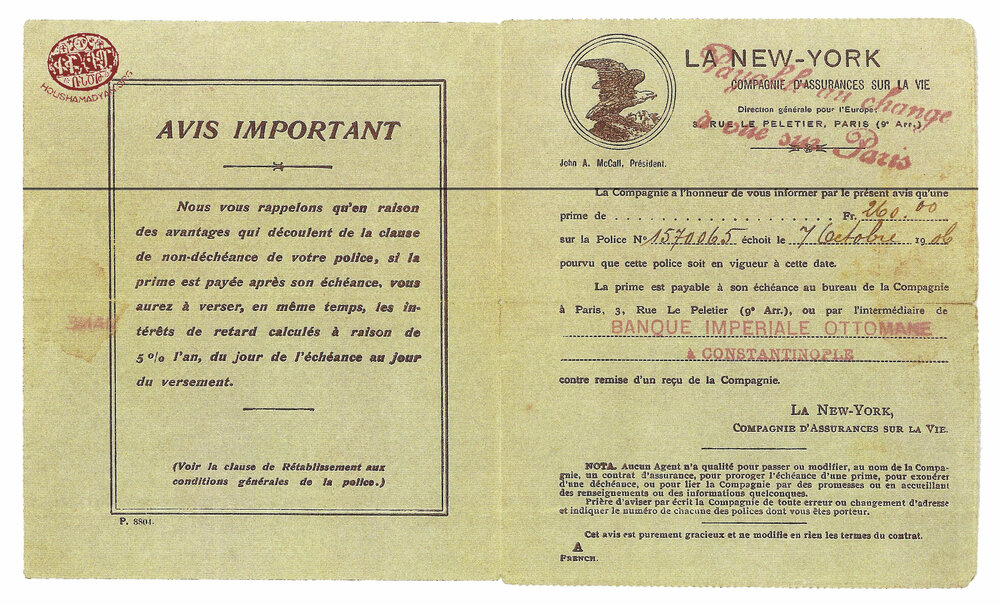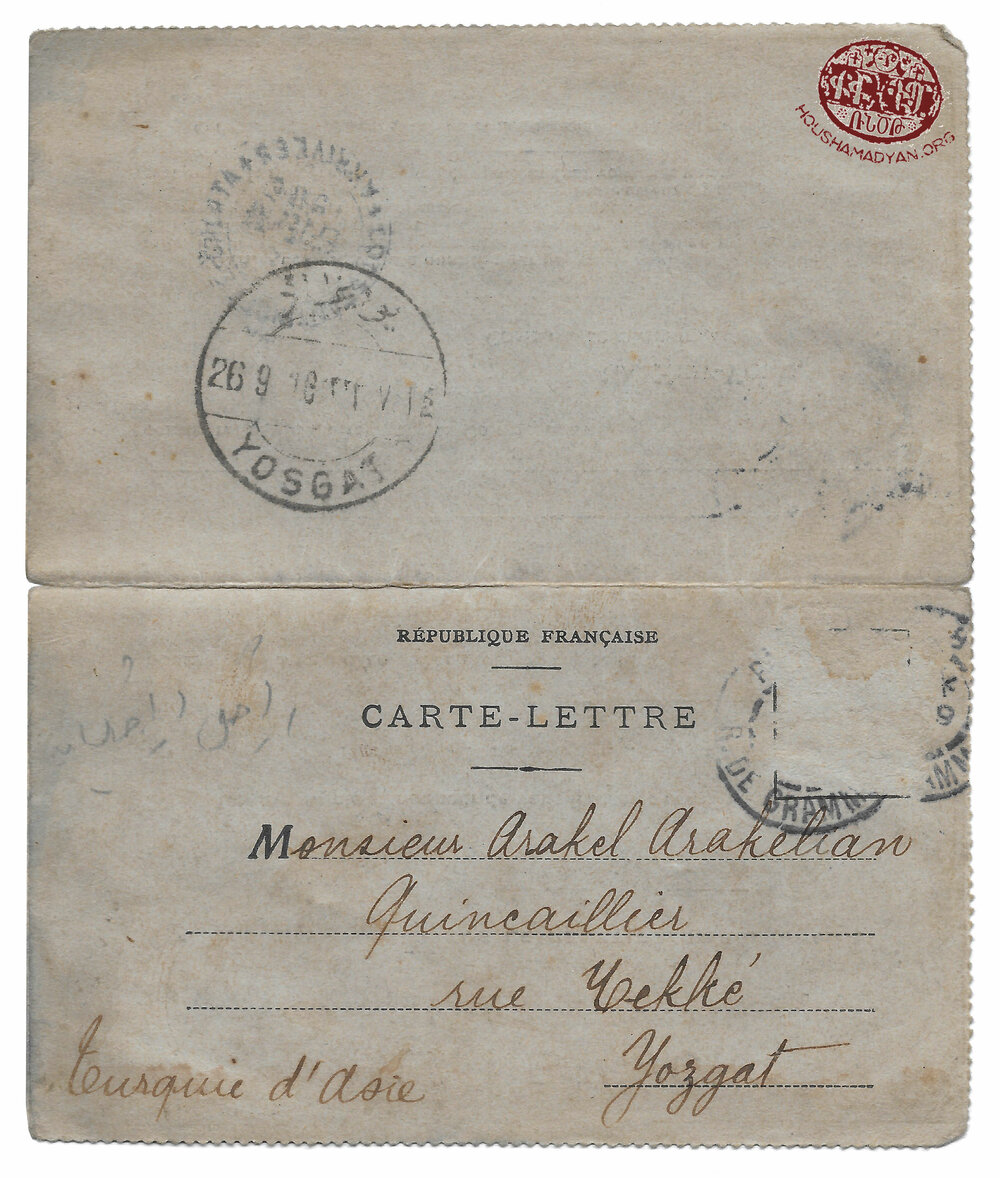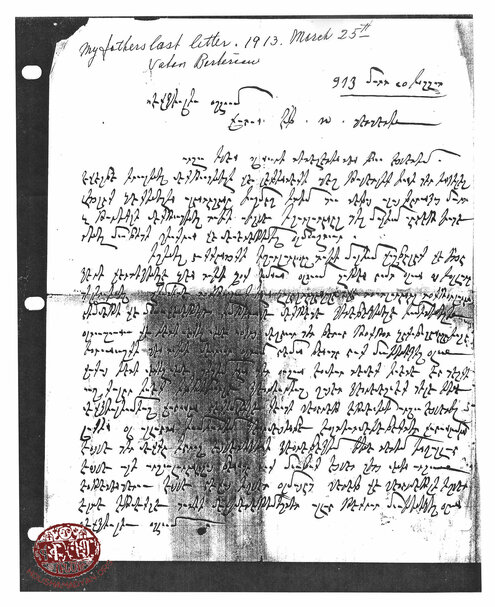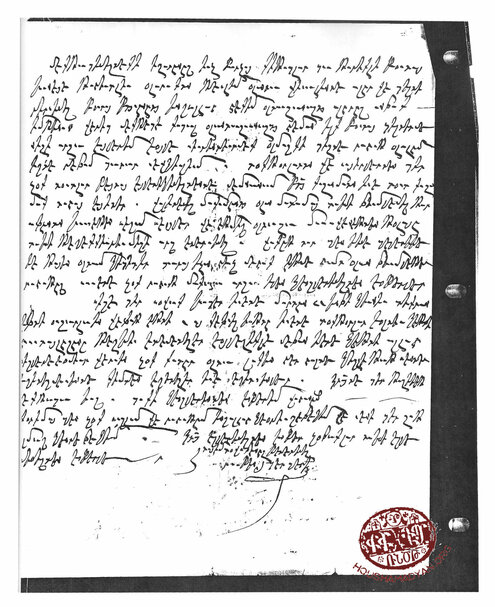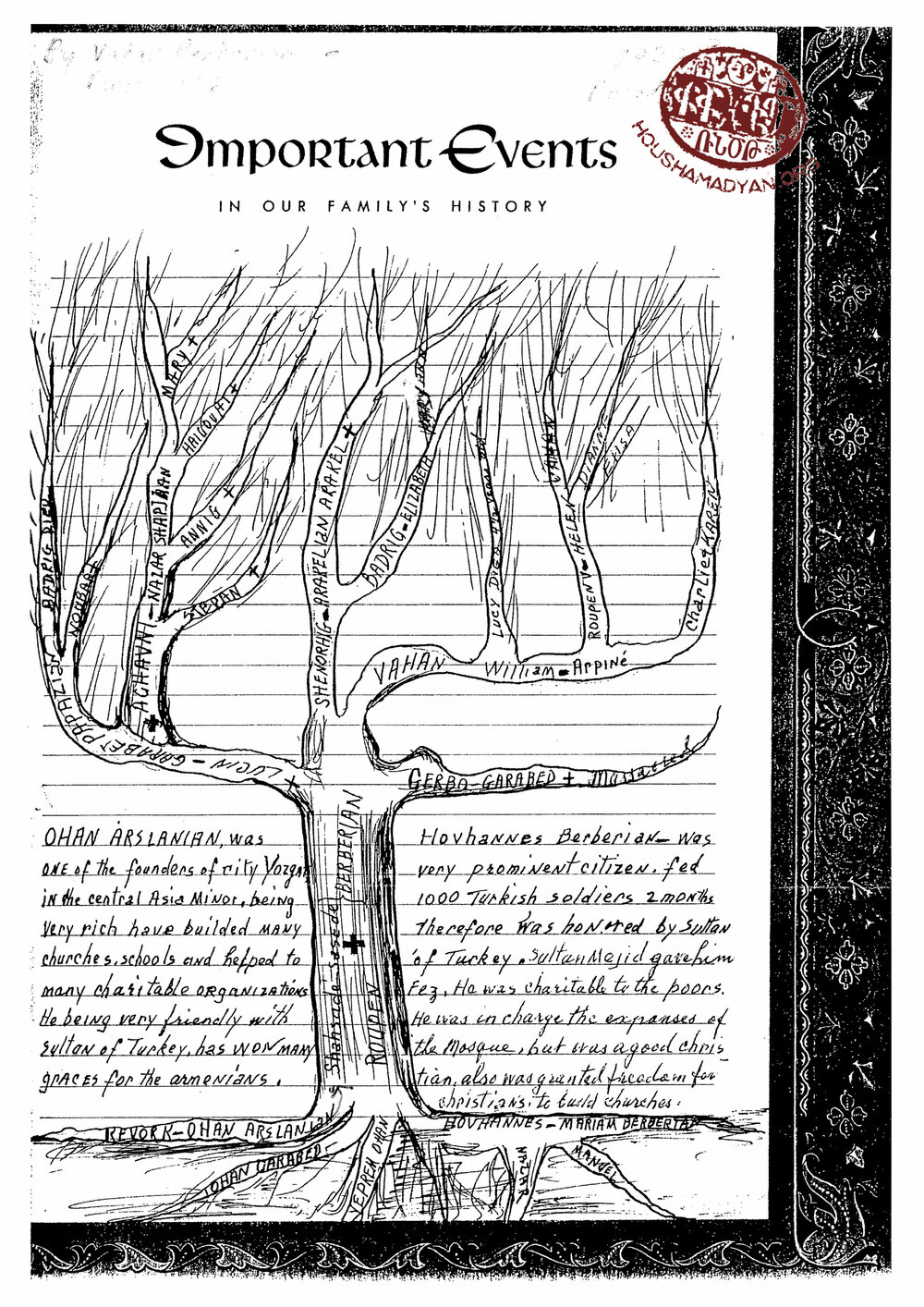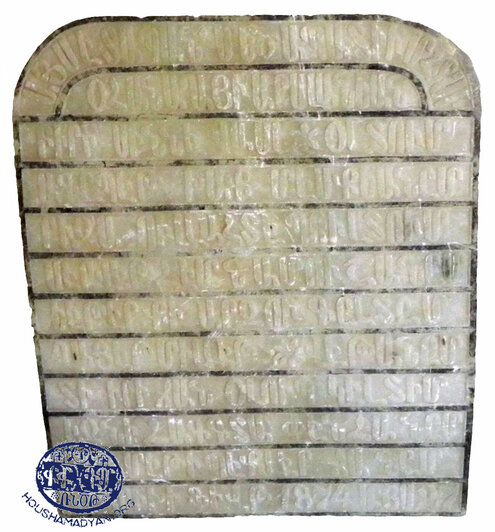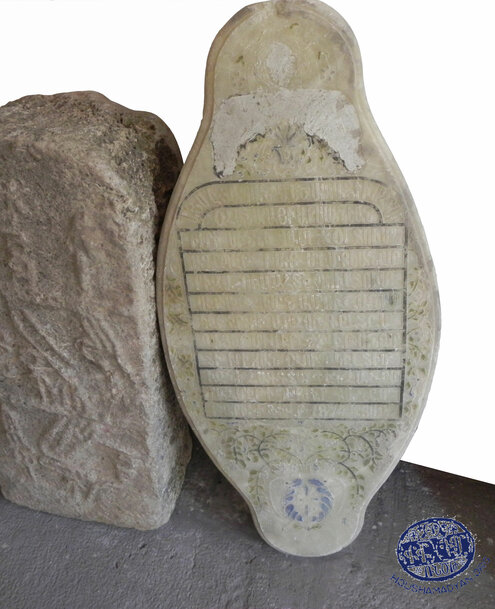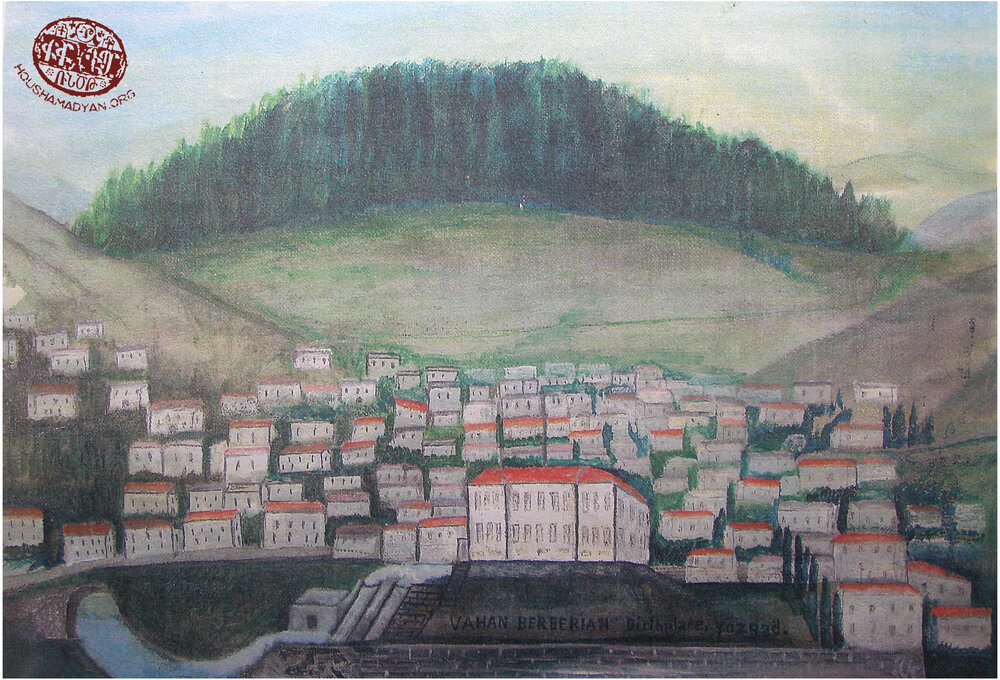Arslanian/Berberian/Arakelian collection - USA
These materials were given to Houshamadyan by Mary Ann and Edward Kazanjian. Mary Ann is one of the descendants of Ohan amira Arslanian (1784-1874), who was a well known figure in Yozgat. Mary Ann's grandmother, Shnorhig Arakelian (born Berberian), was Ohan amira's great-granddaughter. This collection belongs to Ohan amira's descendants, who were all born in Yozgat, and was passed on from generation to generation.



Yozgat, 1912. Standing in the center, the small boy holding a hat is Badrig Arakelian. He is Mary Ann Kazanjian's father, and Shnorhig and Arakel Arakelian's son. The other boys are his cousins. To the left and right of Badrig, seated are his maternal grandmother, Sasedeh Berberian (nee Arslanian), and grandfather, Roupen Berberian. Around 1912, Badrig's family moved to Samsun. The grandmother and grandfather also moved to this city by the Black Sea. They died a few years later before the outbreak of WWI.

Badrig Arakelian (Shnorhig and Arakel Arakelian's son) – Yozgat, 1910. Badrig was born in 1909. His sister's name was Armenouhi and his brother's name was Haroutyoun. Badrig's parents were killed during the Genocide, his brother and sister were lost without a trace while Badrig was sent to a Turkish orphanage in Merzifon/Marzvan, which was founded in the buildings belonging to the American college. Badrig had a maternal uncle in Istanbul, who found out that Badrig was in Merzifon/Marzvan. Friends helped the uncle to get Badrig out of the orphanage in Merzifon/Marzvan, and after many adventures, he succeeded in bringing Badrig to Istanbul from Samsun on a boat. In 1920, Badrig and his paternal aunt moved to the United States, and settled in Philadelphia where his maternal uncle, Vahan Berberian and paternal uncle, Levon Arakelian, lived.

The envelope of the life insurance prime sent by the New York Life Insurance company to Yozgat to Arakel Arakelian's home address. The following address is written in french on the envelope: Monsieur Arakel Arakelian, quincaillier, rue Tekké, Yozgat (Mr Arakel Arakelian, purveyor of hardware, supplier of consumer goods, Tekke street, Yozgat). Around 1912, Arakel Arakelian and his family moved to Samsun where he worked as a merchant. Arakel and his wife Shnorhig both died during the Genocide.

Family tree prepared by Vahan Berberian. Vahan is Badrig's (Mary ann Kazanjian's father) maternal uncle (Shnorhig's brother). The family tree starts from Ohan amira Arslanian's generation. Vahan was born in Yozgat in 1888 and died in the States in 1993. He attended the local national Armenian school in Yozgat, and later attended the Armenian protestant school in his native city. Afterwards, he attended the Turkish secondary school idadiye. Later, his parents sent him to Ankara, where he attended the local Jesuit school. He studied law in Istanbul and got enlisted in the Ottoman army. He avoided military service and in 1911 he moved to the United States.

Ohan Arslanian's (1784-1874) tombstone, currently in Yozgat, in the vicinity o their ancestral family home. The family house has been turned into an ethnographical museum.
In the second half of the 19th century, Ohan amira Arslanian sponsored the construction of an Armenian school (better known as the Mother School) in the courtyard of Yozgat’s diocese. The benefactor also initiated construction of shops along both sides of the road leading from the church to the Tash Khan Bridge. Income from the stores covered expenses of the church and school. Ohan Arslanian was a prominent figure in the Yozgat area. He was able to amass wealth, power and position via the patronage he enjoyed of the Chapanoghlu (derebey/feudal) family. This family was considered the largest landowner in the entire region. Arslanian had risen to the rank of chorbadji; i.e. he served as mediator between Yozgat Armenians and the feudal family regarding a host of matters. Arslanian launched a number of construction projects in the town. It is noted that he purchased the tithe (ashar/aşar) for the entire Yozgat prefecture from the Ottoman government. Arslanian often used this influential position for the benefit of various Armenian undertakings; for example the construction of schools and churches.

The city of Yozgat, oil-painting. This is Vahan Berberian's work. This painting was drawn solely relying on memory, since when Vahan left Yozgat in 1911, he never went back. He drew this painting around 1911 when he lived in Philadelphia. 28x35 (11" x 14"). The painting is currently kept in the family collection in the States.
